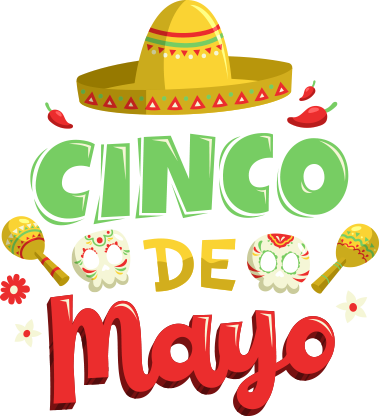Cinco de Mayo is an annual celebration held on May 5th to commemorate the Mexican Army's victory over the French Empire at the Battle of Puebla on May 5, 1862. While it is a relatively minor holiday in Mexico, it has become a significant cultural event in the United States, where it is celebrated with parades, music, dancing, and traditional Mexican cuisine.


Cinco de Mayo: A celebration of Mexican heritage
History:
The Battle of Puebla took place during the French intervention in Mexico, a period of conflict that followed the Mexican-American War. Despite being outnumbered and outgunned, the Mexican forces, led by General Ignacio Zaragoza, successfully repelled the French invaders in a decisive victory at the city of Puebla.
Celebrations:
In Mexico, Cinco de Mayo is primarily observed in the state of Puebla, where the battle took place. Celebrations may include military parades, reenactments of the battle, and cultural performances. In the United States, however, Cinco de Mayo has evolved into a widespread celebration of Mexican culture and heritage, particularly in areas with large Mexican-American populations.
Traditions:
Cinco de Mayo celebrations in the United States often feature traditional Mexican music, such as mariachi and banda, as well as folkloric dancing, including the famous Mexican hat dance. Festive decorations, including banners, flags, and piñatas, adorn streets and venues. Mexican cuisine, such as tacos, tamales, and guacamole, is a central part of the festivities, along with traditional beverages like margaritas and Mexican beer.
Significance:
While Cinco de Mayo commemorates a specific historical event, its significance extends beyond the battlefield. For many Mexican-Americans, it is a day to celebrate their cultural heritage and identity, as well as to recognize the contributions of Mexican immigrants to American society. It is also an opportunity for people of all backgrounds to come together and enjoy the rich and vibrant culture of Mexico.
Misconceptions:
Despite its popularity, Cinco de Mayo is often misunderstood as Mexico's Independence Day, which is actually celebrated on September 16th. Additionally, some critics argue that the commercialization of Cinco de Mayo in the United States has led to cultural appropriation and stereotypes, detracting from its historical and cultural significance.
Conclusion:
Cinco de Mayo serves as a reminder of the resilience and courage of the Mexican people in the face of adversity. It is a day to honor their history, culture, and contributions, while also fostering understanding and appreciation across cultural boundaries.